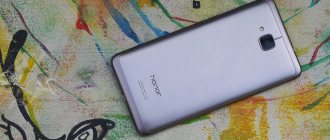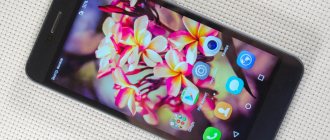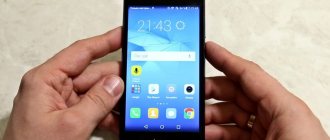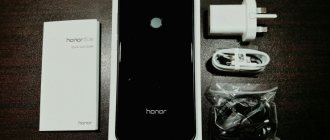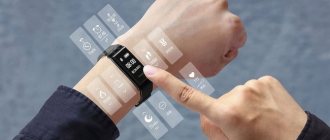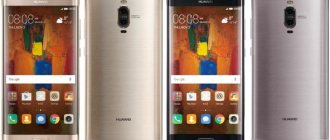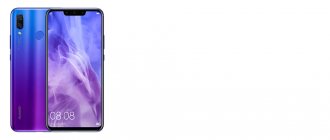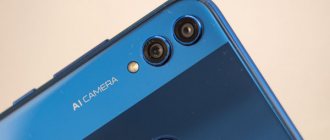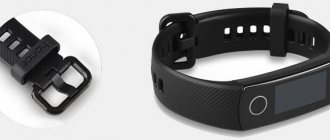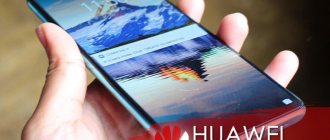Honor 7C is a budget device that starts at Rs 9,999 (roughly $222.2). The device is aimed at consumers who aren't willing to shell out a fortune to own the latest Galaxy or Pixel flagship, or even more affordable flagships like the OnePlus 6.
Honor has several budget devices such as Honor 7A, Honor 7C and Honor 7X. The Honor 7C is aimed at selfie lovers as the device comes with a "smart adjustable selfie light" as claimed by Honor.
If you have purchased Honor 7C but are facing some issues and bugs that are bothering you and making you change your phone, let us tell you that almost every device that is currently in the market has several bugs and issues, so there are no reasons for concern.
Here are a few issues that users are facing with Honor 7C and how to resolve them.
Related article: Honor Play Android Pie update.
Specifications
- Screen: 5.7 inches, aspect ratio 18:9, IPS GFF, 1440×720 283 ppi, polarizing filter, 2.5D.
- Operating system: Android 8.0.0 Oreo, EMUI 8.0.0.
- Chipset: Qualcomm Snapdragon 430 (MSM8937).
- CPU: Cortex-A53 (4 x 1.4 GHz + 4 x 1.1 GHz).
- GPU: Adreno 505.
- RAM: 3 GB.
- Built-in memory: 32 GB + microSD up to 256 GB.
- Main camera: dual 12 MP (f/2.2) + 2 MP, LED flash.
- Front camera: 8 MP (f/2.0), LED flash.
- Battery: 3000 mAh, non-removable.
- Dimensions: 152.4 x 73 x 8.05 mm.
- Weight: 152 grams.
- Slots: 2 nano-SIM + microSD, triple tray.
- Communications: LTE.Cat 4, Bluetooth: 4.2, Wi-Fi 802.11b/g/n 2.4 GHz, GPS (A-GPS), GLONASS, USB OTG.
- Sensors: light, proximity, accelerometer, gyroscope, fingerprint scanner, compass, step detector.
Review of the budget smartphone Honor 7C with a good combination of characteristics
Huawei has recently introduced so many similar smartphone models in an affordable price segment that it becomes difficult to remember how all these Honor 7C/Pro, Honor 7A/Pro and others differ from each other. And yet there are differences, and if we sum them up, it turns out that our today’s hero - Honor 7C - has absorbed all the essentials, but so that its price does not cross the line of being generally available. The smartphone turned out to be exactly the “golden mean”, which all models of the “people’s” brand Honor were at first.
Main characteristics of Honor 7C (model AUM-L41)
- SoC Qualcomm Snapdragon 435, 8 cores ARM Cortex-A53 @1.4/1.1 GHz
- GPU Adreno 505
- Operating system Android 8.0
- Touch display IPS 5.7″, 1440×720 (18:9)
- Random access memory (RAM) 3 GB, internal memory 32 GB
- Nano-SIM support (2 pcs.)
- microSD support (up to 256 GB)
- GSM/WCDMA networks
- LTE Cat.4 FDD B1/3/5/7/8/20 networks
- Wi-Fi 802.11b/g/n (2.4 GHz)
- Bluetooth 4.2
- NFC
- GPS, A-GPS, Glonass
- Micro-USB
- Audio output 3.5mm
- Main camera 13 MP, f/2.2, autofocus + 2 MP; video 1080p
- Front camera 8 MP, f/2.0, fixed. focus, flash
- Proximity and lighting sensors, accelerometer
- Battery 3000 mAh
- Dimensions 152×73×8.1 mm
- Weight 160 g
| average price | find out prices |
| Retail offers | find out the price |
Appearance and ease of use
Honor 7C has a plastic body with a standard streamlined design, like most faceless inexpensive smartphones, without its own flair. The front panel is covered with 2.5D glass with sloping edges.
The surface of the back wall is matte, pleasant to the touch, and fingerprints are practically invisible on it. The side edges are also made of plastic, only smoother and glossier.
The device is quite large, but not heavy, does not slip out of your hands, and is held securely. There are no complaints about the quality and assembly, everything fits perfectly, and the case does not creak or play when compressed.
The camera on the back does not protrude beyond the surface, the smartphone lies stable on the table and does not wobble when you touch the screen. The flash is located right there, it is single, it shines quite brightly.
The front camera has its own LED flash. Also above the screen you can find such a useful element as an LED event indicator.
The navigation buttons here are displayed on the screen, while too much space is left under the screen, which is not occupied by the stylish large inscription “Honor” - the Chinese continue to live somehow in their own way, without even trying to understand the peculiarities of European taste. Well, you don’t need such a huge logo here, make it a small inscription on the back side!
There are no complaints about the hardware keys on the side: they are cleverly placed on one side, and their travel is elastic and distinct.
To install cards, there is a slot on the side for two Nano-SIM cards and one memory card at once, which is good news.
The top end is occupied only by a 3.5 mm audio output for headphones.
On the bottom you can find a microphone and a USB connector, but this is not USB Type-C, but an outdated Micro-USB. The speaker is also located at the bottom end, there is only one here, the second segment of holes is made for beauty.
Honor 7C is available in three different body colors: black, gold, and blue. The smartphone did not receive protection from water and dust.
Screen
The Honor 7C smartphone is equipped with an IPS display covered with 2.5D glass. The screen has physical dimensions of 65x130 mm with a diagonal of 5.7 inches and an aspect ratio of 18:9, the pixel density is about 283 ppi. The screen resolution is 1440×720. The frame on the sides of the screen is almost 4 mm wide, on the top - 10 mm, and on the bottom - 12 mm.
Multi-touch tests diagnose support for 10 simultaneous touches. There is also a light sensor in place to implement automatic brightness adjustment.
A detailed examination using measuring instruments was carried out by the editor of the “Monitors” and “Projectors and TV” sections Alexey Kudryavtsev . Here is his expert opinion on the screen of the sample under study.
The front surface of the screen is made in the form of a glass plate with a mirror-smooth surface that is scratch-resistant. Judging by the reflection of objects, the anti-glare properties of the screen are slightly worse than those of the Google Nexus 7 (2013) screen (hereinafter simply Nexus 7). For clarity, here is a photo in which a white surface is reflected when the screens are turned off (Nexus 7 on the left, Honor 7C on the right, then they can be distinguished by size):
The Honor 7C's screen is a little lighter (brightness according to photographs is 127 versus 118 for the Nexus 7). The ghosting of reflected objects in the Honor 7C screen is very weak, this indicates that there is no air gap between the layers of the screen (more specifically, between the outer glass and the surface of the LCD matrix) (OGS - One Glass Solution type screen). Due to the smaller number of boundaries (glass/air type) with very different refractive indices, such screens look better in conditions of intense external illumination, but their repair in the case of cracked external glass is much more expensive, since the entire screen has to be replaced. There may be a special oleophobic (grease-repellent) coating on the outer surface of the screen, but if there is one, it is much worse in effectiveness than the Nexus 7, so fingerprints are almost as difficult to remove and appear at about the same speed. as in the case of ordinary glass.
When manually controlling the brightness and displaying the white field in full screen, the maximum brightness value was about 430 cd/m², the minimum was 3 cd/m². The maximum brightness is quite high, and, given the good anti-glare properties, something on the screen can be seen even on a sunny day outdoors. In complete darkness, the brightness can be reduced to a comfortable value. There is automatic brightness adjustment based on the light sensor (it is located to the left of the front camera). In automatic mode, as external lighting conditions change, the screen brightness both increases and decreases. The operation of this function depends on the position of the brightness adjustment; the user can use it to try to set the required brightness level in the current conditions. We slightly increased the brightness in complete darkness, as a result, for such conditions, the auto-brightness function began to reduce the brightness to 20 cd/m², in an artificially lit office (approximately 550 lux) it was set to 170 cd/m², in a very bright environment (corresponding to clear lighting during the day outdoors, but without direct sunlight - 20,000 lux or a little more) increased to 430 cd/m². We were quite pleased with the result. It turns out that the auto-brightness function works adequately and allows the user to customize their work to individual requirements. At any brightness level, there is no significant backlight modulation, so there is no screen flicker.
This smartphone uses an IPS matrix. The microphotographs show a typical IPS subpixel structure:
For comparison, you can see the gallery of microphotographs of screens used in mobile technology.
The screen has good viewing angles without significant color shifts even with large deviations of the view from perpendicular to the screen and without inverting shades (except for the darkest ones when deviating along one diagonal). For comparison, here are photographs in which the same images are displayed on the Honor 7C and Nexus 7 screens, while the screen brightness is initially set to approximately 200 cd/m², and the color balance on the camera is forcibly switched to 6500 K.
There is a white field perpendicular to the screens:
Note the good uniformity of brightness and color tone of the white field.
And a test picture:
The colors on the Honor 7C screen are slightly more saturated. Further tests showed that this is due to slightly increased color contrast. The color balance between the Nexus 7 and our test screen is slightly different.
Now at an angle of approximately 45 degrees to the plane and to the side of the screen:
It can be seen that the colors have not changed much on both screens, but on the Honor 7C the contrast has decreased to a greater extent due to the strong highlighting of blacks. He also began to show signs of inverting dark shades.
And a white field:
The brightness at an angle of the screens decreased (at least 5 times, based on the difference in shutter speed), but in the case of Honor 7C the drop in brightness is greater. When deviated diagonally, the black field brightens greatly, but remains conditionally neutral gray in hue. The photographs below demonstrate this (the brightness of the white areas in the direction perpendicular to the plane of the screens is the same!):
And from another angle:
When viewed perpendicularly, the uniformity of the black field is excellent:
The contrast (approximately in the center of the screen) is high - about 1600:1. The response time for the black-white-black transition is 24 ms (14 ms on + 10 ms off). The transition between halftones of gray 25% and 75% (based on the numerical value of the color) and back takes a total of 43 ms. The gamma curve, constructed using 32 points with equal intervals based on the numerical value of the shade of gray, did not reveal any blockage in either the highlights or the shadows. The exponent of the approximating power function is 2.11, which is slightly lower than the standard value of 2.2. In this case, the real gamma curve almost does not deviate from the power-law dependence:
This device has some kind of dynamic adjustment of the backlight brightness in accordance with the nature of the displayed image. As a result, the resulting dependence of brightness on hue (gamma curve) may not correspond to the gamma curve of a static image, since the measurements were carried out with sequential display of shades of gray on almost the entire screen. For this reason, we carried out a number of tests - determining contrast and response time, comparing black illumination at angles - (however, as always) when displaying special templates with a constant average brightness, and not monochromatic fields in the entire screen. In general, such non-switchable brightness correction does nothing but harm, since constantly changing the screen brightness can at least cause some discomfort. However, its effect is weakly expressed, and it remains a mystery for what purpose this brightness adjustment was left turned on at all, especially since the contrast is already high.
Color gamut is close to sRGB:
The curvature of the coverage boundary at the transition from yellow to green shows that some kind of software correction is being performed (it’s not clear why). The spectra show that the matrix filters moderately mix the components with each other:
As a result, visually the colors on this screen would not differ from natural ones, but the result is spoiled by a slight increase in color contrast. The balance of shades on the gray scale is a compromise, since the color temperature is significantly higher than the standard 6500 K, but the deviation from the blackbody spectrum (ΔE) is below 10, which is considered an acceptable indicator for a consumer device. At the same time, color temperature and ΔE change little from hue to hue - this has a positive effect on the visual assessment of color balance. (The darkest areas of the gray scale can be ignored, since color balance there is not very important, and the error in measuring color characteristics at low brightness is large.)
This device has the ability to adjust the color balance by adjusting the hue on the color wheel.
In the graphs above, the curves are Without corr. correspond to the results without any color balance correction, and the curves Corr. — data obtained after shifting the point to the position indicated in the image above. It can be seen that the change in balance corresponds to the expected result, since the color temperature approached the standard value, and ΔE increased slightly. There is some benefit from such a correction, but the maximum brightness has decreased to 380 cd/m², and it is not too much anyway. Note that this function is implemented as a show-case option, since there is no numerical reflection of the correction, there is no field for measuring color balance, and the range is not enough to correct both ΔE and color temperature.
There is a fancy setting that allows you to reduce the intensity of the blue component.
Marketers tried to intimidate users in order to show the level of care of the manufacturer. Of course, the screen does not have any UV radiation (see spectrum above), and there is no eye fatigue caused specifically by blue light. In principle, bright light can lead to disruption of the circadian rhythm (see the article about the iPad Pro with a 9.7-inch display), but everything can be solved by adjusting the brightness to a comfortable level, and there is absolutely no way to distort the color balance, reducing the contribution of blue sense.
To summarize: the screen has a fairly high maximum brightness and has good anti-glare properties, so the device can be used outdoors even on a sunny summer day without any problems. In complete darkness, the brightness can be reduced to a comfortable level. It is also possible to use a mode with automatic brightness adjustment, which works adequately. The advantages of the screen include the absence of an air gap in the layers of the screen and flicker, high contrast, excellent uniformity of the black field, acceptable color balance and a color gamut close to sRGB. The disadvantages are a very weak oleophobic coating (if any), low black stability to deviation of the gaze from perpendicular to the screen plane, as well as non-switchable dynamic adjustment of the backlight brightness and slightly inflated color contrast. In general, the screen is an inexpensive option on an IPS matrix; it causes neither delight nor disgust.
Camera
The front camera of the Honor 7C has an 8-megapixel sensor and an f/2.0 aperture lens. The camera has its own flash, but no autofocus. There is a traditional portrait “enhancement” feature that blurs skin textures and enlarges eyes. The camera shoots acceptably in bright daylight, but even in room lighting the quality drops to obscene levels, and the flash doesn't help much either in twilight or darkness.
The rear camera is implemented in the form of a double module: the main one uses a sensor with a resolution of 13 megapixels and a lens with f/2.2 aperture, while the additional sensor has a resolution of only 2 megapixels. There is fast autofocus and a medium-brightness flash, but there is no optical stabilization. There is no separate mode for manual settings; all possible settings are collected in a single list, called up by swiping from right to left. There is no standard option to save pictures in RAW.
Examples of photos taken with the rear camera:
The quality of shooting seriously suffers due to the tiny sensor, the noise from which is clearly visible in the pictures even on a sunny summer day, and when shooting indoors or at dusk, there is almost nothing left in the frame except noise. In this case, the noise reducer cannot cope (or does not try to cope) not only with brightness noise, but also with color noise, so get ready to see a scattering of red-blue-green dots in dimly lit parts of the frame. As expected, the detail of the images is poor in any conditions. There are probably no special complaints about the camera’s color rendering, but it regularly makes mistakes with exposure metering and cannot boast of a wide dynamic range. The camera may attempt to blur the background around the object (or objects) in the sharpness zone, passing it off as a portrait, but this function works poorly. In general, a smartphone is suitable for recording events, but taking pictures that are pleasing to the eye on the Honor 7C is almost impossible.
The camera can shoot video in a maximum resolution of 1080p at 30 fps; there are no higher modes of 4K and 60 fps. There is no stabilization either. The shooting quality is average, the picture could have been more rich and detailed. The sound is recorded rather muffled, the active post-processing of noise reduction is clearly audible, there are distortions in the form of an echo - in short, the sound recording is not the best.
Video examples:
- Video No. 1 (32 MB, 1920× [email protected] fps, H.264, AAC)
- Video No. 2 (56 MB, 1920× [email protected] fps, H.264, AAC)
- Video No. 3 (36 MB, 1920× [email protected] fps, H.264, AAC)
- Video No. 4 (28 MB, 1920× [email protected] fps, H.264, AAC)
- Video No. 5 (40 MB, 1920× [email protected] fps, H.264, AAC)
Telephone and communications
The Honor 7C platform supports LTE Cat.4 networks with data transfer speeds no higher than 150/50 Mbit/s, that is, LTE Cat.6 is not here. All three LTE FDD bands used in Russia are supported (Band 3, 7, 20). In practice, within the city limits of the Moscow region, the device demonstrates reliable operation in wireless networks, does not lose connection, and quickly restores connection after a forced interruption.
There is no support for the second Wi-Fi band (5 GHz), but there is an NFC module, so the smartphone works with Android Pay, which is good.
The navigation module works with GPS (with A-GPS), and with the domestic Glonass, and the Chinese Beidou. The first satellites, even with a cold start, are detected within a minute. But the magnetic compass, necessary for navigation programs, is missing in the smartphone.
The phone application supports Smart Dial, that is, while dialing a phone number, a search is immediately carried out by the first letters in contacts. Methods for setting up sorting and display of contacts are standard for the Android interface. Medium power vibration alert. SIM cards can be in 4G and 3G standby mode at the same time. The cards operate in Dual SIM Dual Standby mode, there is only one radio modem.
Software and multimedia
The software platform uses Android OS version 8.0 with Huawei's own shell version EMUI 8.0 - the latest. Naturally, there is the possibility of updating over the air (OTA).
The design and organization of the interface are well known to users of Huawei products. There is a virtual button, a multi-window mode, the ability to reduce the keyboard and the working area of the screen in size. As usual, there are a lot of pre-installed applications, some of them are useful, others are clearly unnecessary. There are several of Huawei's own utilities, including a useful phone manager responsible for system monitoring, memory cleaning, virus scanning and protection, spam blocking, etc.
With the latest update, a new application suddenly appeared in the smartphone called “Party” - for synchronizing music playback on several phones connected to the same Wi-Fi network.
To listen to music, we use Huawei's familiar proprietary audio player with a set of Histen audio effects, where you can turn on the 3D sound effect, select presets for different types of headphones, and manually control a ten-band equalizer. Both in headphones and through the speaker, the smartphone sounds quite satisfactory; the hero of the review does not offer anything special in terms of sound, but the sound cannot be called low-quality.
The microphones have good sensitivity, the voice recorder is quite suitable for any task. There is a built-in FM radio, and this is good news.
Performance
As a hardware platform, Honor 7C uses the Qualcomm Snapdragon 435 SoC, manufactured using a 28-nanometer process technology. This SoC is configured with four Cortex-A53 processor cores with frequencies up to 1.4 GHz and four less powerful ones with frequencies up to 1.1 GHz. The graphics accelerator is the Adreno 505 GPU. The RAM capacity is 3 GB, the storage capacity is 32 GB. Of these, about 24.8 GB of flash memory is initially free. It is possible to connect memory cards, and the card can be designated as main memory.
Qualcomm Snapdragon 435 is a rather old and not at all productive platform, made using an outdated 28 nm process technology. But, unlike the Snapdragon 425, it at least has support for the Vulkan API and OpenGL ES 3.1. As a result, in real use scenarios there are no particular problems, but with demanding games there may be problems. At least Injustice 2 slows down noticeably. Of course, this is not a gaming solution, and such a smartphone does not have any performance reserves for the future.
Testing in comprehensive tests AnTuTu and GeekBench:
For convenience, we have compiled all the results we obtained when testing the smartphone in the latest versions of popular benchmarks into tables. The table usually adds several other devices from different segments, also tested on similar latest versions of benchmarks (this is done only for a visual assessment of the obtained dry figures). Unfortunately, within the framework of one comparison it is impossible to present the results from different versions of benchmarks, so many worthy and relevant models remain “behind the scenes” - due to the fact that they once passed the “obstacle course” on previous versions of test programs.
| Honor 7C (Qualcomm Snapdragon 435) | Meizu m8c (Qualcomm Snapdragon 425) | Samsung J4 (Samsung Exynos 7570) | Samsung J6 (Samsung Exynos 7870) | Xiaomi Redmi 6A (Mediatek Helio A22) | |
| AnTuTu (v7.x) (bigger is better) | 58383 | 43492 | 41471 | 62893 | 62240 |
| GeekBench (v4.x) (bigger is better) | 678/2734 | 671/1838 | 616/1730 | 695/3354 | 827/2456 |
Testing the graphics subsystem in gaming tests 3DMark, GFXBenchmark and Bonsai Benchmark:
When testing in 3DMark, the most powerful smartphones now have the ability to run the application in Unlimited mode, where the rendering resolution is fixed at 720p and VSync is disabled (which can cause the speed to rise above 60 fps).
| Honor 7C (Qualcomm Snapdragon 435) | Meizu m8c (Qualcomm Snapdragon 425) | Samsung J4 (Samsung Exynos 7570) | Samsung J6 (Samsung Exynos 7870) | Xiaomi Redmi 6A (Mediatek Helio A22) | |
| 3DMark Sling Shot ES 3.1 (bigger is better) | 306 | — | 98 | 254 | 281 |
| 3DMark Sling Shot Ex Vulkan (bigger is better) | 304 | — | — | 311 | — |
| GFXBenchmark Manhattan ES 3.1 (Onscreen, fps) | 10 | — | 4 | 7 | 8 |
| GFXBenchmark Manhattan ES 3.1 (1080p Offscreen, fps) | 5 | — | 2 | 3 | 4 |
| GFXBenchmark T-Rex (Onscreen, fps) | 27 | 13 | 11 | 16 | 20 |
| GFXBenchmark T-Rex (1080p Offscreen, fps) | 16 | 8 | 7 | 10 | 13 |
Browser cross-platform tests:
As for benchmarks for assessing the speed of the javascript engine, you should always make allowance for the fact that their results significantly depend on the browser in which they are launched, so the comparison can only be truly correct on the same OS and browsers, and this is possible during testing not always. For Android OS, we always try to use Google Chrome.
| Honor 7C (Qualcomm Snapdragon 435) | Meizu m8c (Qualcomm Snapdragon 425) | Samsung J6 (Samsung Exynos 7870) | Xiaomi Redmi 6A (Mediatek Helio A22) | |
| Mozilla Kraken (ms, less is better) | 16739 | 12987 | 11974 | 11431 |
| Google Octane 2 (bigger is better) | 2649 | 3261 | 3818 | 4290 |
| JetStream (bigger is better) | 15 | 18 | 24 |
AndroBench memory speed test results:
Thermal photographs
Below is a thermal image of the rear surface obtained after 10 minutes of running the battery test in the GFXBenchmark program:
The heating is localized in the upper right part of the device, which apparently corresponds to the location of the SoC chip. According to the heat camera, the maximum heating was 39 degrees (at an ambient temperature of 24 degrees). This is average heating in this test for modern smartphones.
Playing video
To test the omnivorous nature of video playback (including support for various codecs, containers and special features, such as subtitles), we used the most common formats, which make up the bulk of the content available on the Internet. Note that for mobile devices it is important to have support for hardware video decoding at the chip level, since it is most often impossible to process modern options using processor cores alone. Also, you shouldn’t expect a mobile device to decode everything, since the leadership in flexibility belongs to the PC, and no one is going to challenge it. All results are summarized in a table.
| Format | Container, video, sound | MX Video Player | Standard player |
| 1080p H.264 | MKV, H.264, 1920×1080, 24 fps, AAC | plays normally | plays normally |
| 1080p H.264 | MKV, H.264, 1920×1080, 24 fps, AC3 | plays normally | no sound |
| 1080p H.265 | MKV, H.265, 1920×1080, 24 fps, AAC | plays normally | plays normally |
| 1080p H.265 | MKV, H.265, 1920×1080, 24 fps, AC3 | plays normally | no sound |
Further testing of video playback was performed by Alexey Kudryavtsev .
We did not find the MHL interface, like Mobility DisplayPort, in this smartphone, so we had to limit ourselves to testing the output of video files on the screen of the device itself. To do this, we used a set of test files with an arrow and a rectangle moving one division per frame (see “Method for testing video playback and display devices. Version 1 (for mobile devices)”). Screenshots with a shutter speed of 1 s helped determine the nature of the output of frames of video files with various parameters: the resolution varied (1280 by 720 (720p), 1920 by 1080 (1080p) and 3840 by 2160 (4K) pixels) and frame rate (24, 25, 30, 50 and 60 fps). In the tests we used the MX Player video player in the “Hardware” mode. The test results are summarized in a table (the device does not play 4K files):
| File | Uniformity | Passes |
| 1080/60p | Badly | few |
| 1080/50p | Fine | No |
| 1080/30p | Great | No |
| 1080/25p | Great | No |
| 1080/24p | Great | No |
| 720/60p | Great | No |
| 720/50p | Great | No |
| 720/30p | Great | No |
| 720/25p | Fine | No |
| 720/24p | Great | No |
Note: If both columns Uniformity and Skips have green ratings, this means that, most likely, when watching films, artifacts caused by uneven alternation and skipping of frames will either not be visible at all, or their number and visibility will not affect comfort viewing. Red marks indicate possible problems with playback of the corresponding files.
According to the frame output criterion, the quality of playback of video files on the screen of the smartphone itself is good, since in most cases frames (or groups of frames) can (but are not required) be output with more or less uniform alternation of intervals and without skipping frames. When playing video files with a resolution of 1280 by 720 pixels (720p) on a smartphone screen, the image of the video file itself is displayed exactly at the height of the screen (in landscape orientation), one to one pixel by pixel, that is, in the original resolution. The brightness range displayed on the screen corresponds to the standard range of 16-235: all gradations of shades are distinguished in shadows and highlights.
Battery life
The Honor 7C battery has an average capacity of 3000 mAh, but the smartphone demonstrates results that are clearly below average when compared with similar solutions on the market. The level of autonomy is low, and this is one of the obvious disadvantages of the new product.
Testing has traditionally been carried out at the usual level of power consumption without using power saving functions, although the device has them.
| Battery capacity | Reading mode | Video mode | 3D Game Mode | |
| Honor 7C | 3000 mAh | 11:00 am | 8:00 am | 4:00 am |
| Meizu m8c | 3070 mAh | 14:00 | 11:00 am | 7:00 am |
| Samsung Galaxy J4 | 3000 mAh | 14:00 | 12:00 pm | 6:30 a.m. |
| Samsung Galaxy J6 | 3000 mAh | 16:20 | 13:00 | 7:00 am |
| Xiaomi Redmi 6A | 3000 mAh | 19:00 | 13:00 | 6 hours 40 minutes |
Continuous reading in the FBReader program (with a standard, light theme) at a minimum comfortable brightness level (brightness was set to 100 cd/m²) lasted up to 11 hours until the battery was completely discharged, and when continuously watching videos in high quality (1080p) with the same brightness level via a home Wi-Fi network, the device operates for 8 hours. In 3D gaming mode, the smartphone can work for up to 4 hours, depending on the specific game.
There is no fast charging here; from its own network adapter, the smartphone is fully charged within 2 hours 50 minutes with a current of 1 A at a voltage of 5 V. Wireless charging is not supported.
Bottom line
Honor 7C is now presented in official Russian retail at a price of 11 thousand rubles. For this price, the device is more than adequate: it has a fashionable elongated screen of good quality, NFC support, a fingerprint scanner, as well as a modern EMUI 8.0 interface based on Android 8.0 OS, plus a triple connector for installing two SIM cards and one microSD card combined with a 3.5mm headphone output. A weak platform, useless cameras, standard sound and a below-average level of autonomy can be forgiven for such a price. With such official prices for devices certified in Russia, Honor 7C fully meets the epithet “golden mean”, that is, it represents that very combination of good technical characteristics and affordable price that budget-conscious users love so much.
Appearance
Honor 7C is equipped with a display with an aspect ratio of 18:9. The design of the device looks harmonious; the cutouts in the screen and the vertical placement of the main cameras were left to the flagships.
Around the display there are frames proportional in thickness. Above the screen there is a place for the LED indicator, sensors, front camera, earpiece and LED flash. The latter is disguised and is not noticeable during everyday use. Below the display is the brand logo, placed in the spirit of previous Honor smartphones. The glass is rounded and your finger glides smoothly.
On the Russian market, Honor 7C is presented in blue, black and gold colors. The lid is made of smooth plastic, the blue color shimmers purple in the light, it looks very interesting. Among the elements, a dual camera with a single flash, an additional microphone, a fingerprint scanner. The service information is painted in blue, the shade goes well with the main color.
For metal lovers, Honor 7C Pro is a larger version of our hero.
The fingerprint scanner is lightning fast, works quickly and accurately. The appearance of the interface is also not late; Honor 7C pleases with its responsiveness. The smartphone also supports facial recognition; the function works accurately, but slowly. It’s much easier to put your finger on the fingerprint sensor or enter a password.
The side frame is made of plastic and covered with a thick layer of glossy varnish. After a week of use without a cover, no chips appeared, the paint resists wear well. Ports and buttons are located at the ends, at the bottom: microphone, microUSB and multimedia speaker. On top there is only a headphone jack.
On the left side there is a triple tray for two nanoSIM and microSD cards. On the right is the volume rocker and the power key. The buttons require an unusual amount of force to operate.
The smartphone is ergonomic, the sloping body fits perfectly in the hand and does not slip out. Weighing 152 grams, the device feels light. I don’t want to put the Honor 7C in a case, since the plastic is practical and resists deep scratches well.
Hard Reset for Huawei Honor 7C
Instructions on how to do a Hard Reset on Huawei Honor 7C (factory reset). We recommend that you familiarize yourself with a visual guide called resetting settings on Android. .
Reset codes (open the dialer and enter them).
- *2767*3855#
- *#*#7780#*#*
- *#*#7378423#*#*
Hard Reset via Recovery
- Turn off your device -> go to Recovery
- "wipe data/factory reset"
- “yes - delete all user data” -> “Reboot System”
How to log into Recovery?
- hold down Vol(-) [volume down], or Vol(+) [volume up] and the Power button
- A menu with the Android logo will appear. That's it, you are in Recovery!
Resetting the settings on Huawei Honor 7C can be done in a very simple way:
- Settings->Backup and reset
- Reset settings (at the very bottom)
Display
Honor 7C is equipped with a widescreen display with a diagonal of 5.7 inches and an aspect ratio of 18:9. The matrix is made using IPS technology, a resolution of 1440 x 720 pixels gives a density of 283 ppi. The front panel is covered with 2.5D glass, and a film is applied to the screen from the box. The brand of glass is unknown, minor scratches are inevitable. An oleophobic coating is provided, the finger glides perfectly and is easily wiped off from traces of use.
The sandwich is assembled using GFF technology without an air gap. The viewing angles around the perimeter are maximum. When viewed from the corners, an inversion of colors is noticeable: black turns into purple. The screen does not go blind in the sun. The minimum level is comfortable even at night.
The following options are available in the settings: color temperature adjustment and reading mode with automatic activation. To save energy, it is proposed to automatically reduce the display resolution depending on the task being performed. The touchpad supports up to 10 touches.
Cameras
The main camera is represented by two modules, the first is 13 megapixels with an f/2.2 aperture for shooting, the second is 2 megapixels for determining the depth of the frame. The camera is simple, but the daytime shots surprised me with good dynamic range and detail. The HDR mode works faster than in smartphones based on MediaTek chips, but is inferior to flagships. Works correctly, lacks automatic activation.
At dusk, the simplicity of the module is revealed; the pictures are noisy, although the long shots look good.
The wide aperture mode is based on data from the second 2 MP module. The blur is correct and the hairline is defined correctly. But some objects from the foreground fall into the blurred area, so it’s worth taking several frames at once. As with other Honor smartphones, the focus point and degree of blur can be adjusted after shooting.
The video capabilities of the smartphone are limited to 1080P resolution at 30 frames per second. Sound is recorded in stereo.
The front camera also corresponds to the class of the device; an 8 megapixel module with an f/2.0 aperture gives good pictures during the day. In the evening and at night, the front LED comes into play, operating in flashlight mode. The brightness of the glow is adjusted depending on the surrounding lighting. Among the software options, facial decoration is available with several degrees of intensity for the main and front cameras.
The camera interface is typical for Huawei/Honor smartphones. There are a minimum of additional functions, but all available ones work with a bang. For example, turning on the camera and quickly shooting by double pressing the volume down.
Iron
Honor 7C is based on the old Qualcomm Snapdragon 430. Eight ARM Cortex-A53 cores are divided into two clusters of four and operate at frequencies up to 1.4 GHz and up to 1.1 GHz, respectively, Adreno 505 graphics core, 28 nm process technology.
The platform is served by 3 GB of RAM and 32 GB of internal memory. A little less than 24 GB is free out of the box; you can additionally install a memory card up to 256 GB.
The smartphone handles everyday tasks without any complaints, Internet surfing, social networks and instant messengers do not slow down. Problems only arise when several applications are running in the background at once. But in general, the platform is inferior in the speed of processing photos when enlarging, launching applications, scrolling complex pages and other little things. In games, you should only rely on low and medium-low settings.
Snapdragon 430 in combination with a plastic body is subject to throttling. After 5-10 minutes, the frequency dropped to 1.1 GHz and 0.9 GHz for the two clusters, respectively, which is equivalent to a 20% decrease in performance. After 30 minutes, the minimum level was reached for the first time - 0.96 GHz and 0.76 GHz. After which the frequency increased and decreased at short intervals.
Autonomy
There are two things that confuse the smartphone: the battery is only 3,000 mAh (Xiaomi puts 4 thousand and above) and the QS 430 processor, created on the basis of a 28 nm process technology, which means increased power consumption. As a result of this not the best tandem, we get one day of battery life with 4 hours of screen light.
It is possible to achieve great results. For example, you can remove the second SIM card, configure applications to run in the background, and access the device as a whole less often. Then we will get 1.5 days of autonomy, but no more.
There is no fast charging here. Still, the device is not in that price category.
Software
Honor 7C runs EMUI 8.0.0 based on Android 8.0.0 Oreo. Out of the box, Google services, Yandex search, Sberbank application, 2GIS maps and many other applications are preinstalled.
The pre-installed pack of games from Gameloft deserves special mention. The total number of third-party applications is more than 10 - too many, but all of them are removed by standard means.
The smartphone supports OTA updates, one of which arrived during testing. After installation, Honor 7C really became faster, it’s good that the company also supports inexpensive devices.
Along with the update, a party mode was added, which allows you to connect several smartphones via Wi-Fi to play music synchronously.
The shell is flexible; in particular, the desktop can be with or without a separate application menu. The launcher supports grid changes and scrolling animations. I was especially pleased with the built-in Google Feed, which in the past was exclusive to the search giant’s proprietary launcher. It also supports a simple mode with large application shortcuts grouped across the entire screen.
The appearance is customizable using themes. The brand store is available after adding a Huawei account, and themes can also be found in the Google Play store. The wallpaper, set of icons and appearance of the lock screen are changed. Each theme component can be applied individually.
The navigation bar buttons can be swapped. A floating key is also available, which can replace the navigation bar. Despite the small diagonal, Huawei programmers have equipped the smartphone with one-handed control functions.
There are few software bells and whistles, but everything you need is in place. Gestures: double tap to unlock, as well as reject calls and alarms by turning the smartphone over. Turn on and off according to a schedule.
Connection
The smartphone is dual-SIM, but there is only one radio module and operates in Dual SIM Dual Standby mode. Communication standard LTE.Cat 4, maximum speed up to 150 Mbit/s, the list of supported frequencies includes LTE Band 1, 3, 5, 7, 8, 20. Wi-Fi networks are only 2.4 GHz and this is a drawback.
The Bluetooth 4.2 module works with any device, including headphones and speakers. The only complaint is that the volume levels of the smartphone and the connected device are separate, which is typical for all modern Huawei devices.
For navigation, the smartphone uses two global satellite systems: GPS with A-GPS support, GLONASS and BeiDou. Traditionally for Qualcomm, cold starts are fast and navigation is accurate. There is no electronic magnetic compass and this is a huge drawback; walking around the city with the Honor 7C is inconvenient.
NFC is full-fledged, including Mifare cards. There are no problems with the Google Pay payment system and Troika transport cards. Surprisingly, the older Honor 7C Pro did not have an NFC chip.
Lags and stuttering in general use
Several users have reported that their Honor 7C device is sluggish and sometimes freezes even when there are no CPU/GPU intensive apps running on the device. If you've been experiencing lag while navigating the UI or switching between apps on your Honor 7C, then here are a few things you can try to ensure a smooth experience on your Honor 7C.
Possible solutions:
- Uninstall third-party Phone Manager apps because third-party phone management apps slow down your device's performance by constantly running in the background.
- Close apps running in the background as multiple apps running in the background can cause slowdowns and lags when using your device.
- Reboot your phone to get rid of cached data on the system that can accumulate if you don't reboot your device frequently. We recommend rebooting your device once a week for maximum performance.
- Uninstall apps you don't use and delete images or videos that aren't important to you. Clearing the device memory and having enough free space allows the device to run smoothly and avoid frame freezes.
